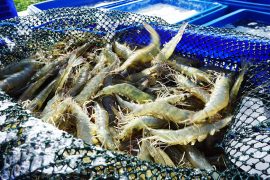
Bright yellow "margarita snails" discovered in Florida Keys
The vibrant environment of the Florida Keys, long associated with the famous“Margaritaville” from Jimmy Buffett’s iconic song, has recently revealed yet another natural marvel. These tropical islands, which shelter the only living coral barrier reef in the continental US and host numerous unique animals, have now gifted the world with a bright yellow snail named in a nod to Margaritaville.
Researchers have introduced this lemony snail and its lime-green counterpart from Belize in a recent study featured in the journal PeerJ.
Worm snails
While reminiscent of the common gastropods that leave trails in gardens, these marine snails have been dubbed “worm snails.” Their sedentary lifestyle distinguishes them from their garden-variety counterparts.
As Rüdiger Bieler, the study’s lead author and the curator of invertebrates at the Field Museum in Chicago, puts it, “I find them particularly cool because they are related to regular free-living snails, but when the juveniles find a suitable spot to live, they hunker down, cement their shell to the substrate, and never move again.”
“Their shell continues to grow as an irregular tube around the snail’s body, and the animal hunts by laying out a mucus web to trap plankton and bits of detritus.”
Hidden treasure
Although Bieler has dedicated over 40 years to studying invertebrates in the Western Atlantic, these snails remained hidden. “We had to look very closely,” he said.
These newly discovered creatures share their lineage with the invasive “Spider-Man” snail, described by the same team in 2017 from the Vandenberg shipwreck off the Florida Keys.
Lemon-yellow snails
The discovery took place in the Florida Keys National Marine Sanctuary, where Bieler, along with Petra Sierwald, another curator from the Field Museum, stumbled upon the lemon-yellow snails. In Belize, they identified a similar snail with a lime hue.
“Many snails are polychromatic – within the same species, you get different colors,” Bieler explained. “I think they do it to confuse fish and not give them a clear target, and some have warning coloration.” However, DNA sequencing revealed a surprising difference between the lime and lemon variants.
Cayo margarita
Taking cues from their DNA, Bieler and his colleagues categorized the snails under a new genus, Cayo, drawing inspiration from the Spanish term for a small island.
The bright yellow snail was christened Cayo margarita, echoing Jimmy Buffet’s “Margaritaville,” whereas the lime one was named Cayo galbinus, translating to “greenish-yellow.”
Warning colors
Interestingly, these Cayo snails share some similarities with another worm snail genus, Thylacodes. A species from Bermuda belonging to this genus was named Thylacodes bermudensis by the team.
Despite being only distantly related, Bieler observed a commonality: “Our thought is this is a warning color. They have some nasty metabolites in their mucus.”
“That also might help explain why they’re able to have exposed heads – on the reef, everybody is out to eat you, and if you don’t have any defensive mechanism, you will be overgrown by the corals and sea anemones and all the stuff around you. It seems like the mucus might help deter the neighbors from getting too close.”
Study implications
Highlighting the significance of this study, Bieler emphasizes the dire situation coral reefs face due to climate change.
“There have been increases in global water temperatures, and some species can handle them much better than others,” he said, suggesting the snails’ habitat preference for dead coral pieces might lead to their expansion with more coral deaths.
Bieler’s concluding observations stress the vast, unexplored wonders of our environment: “This is in snorkeling depth in a heavily touristed area, and we’re still finding new things all around us.”
Image Credit: Photo by R. Bieler
Like what you read? Subscribe to our newsletter for engaging articles, exclusive content, and the latest updates.
—-
Check us out on EarthSnap, a free app brought to you by Eric Ralls and Earth.com.













